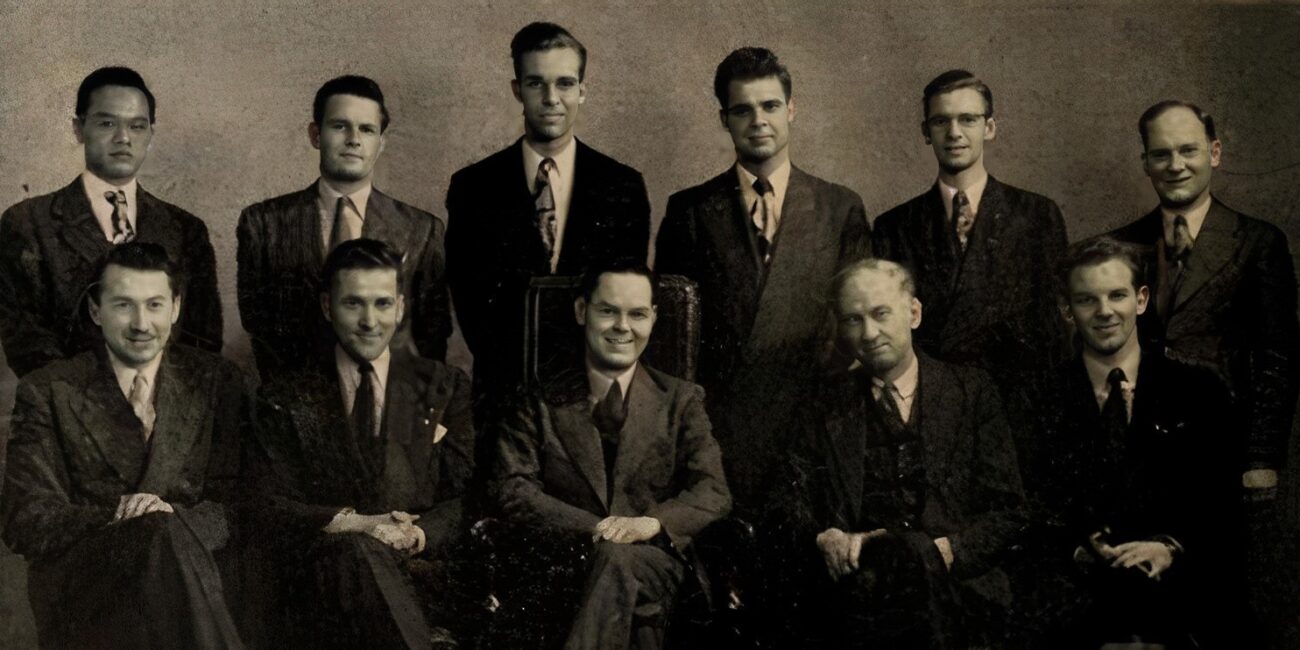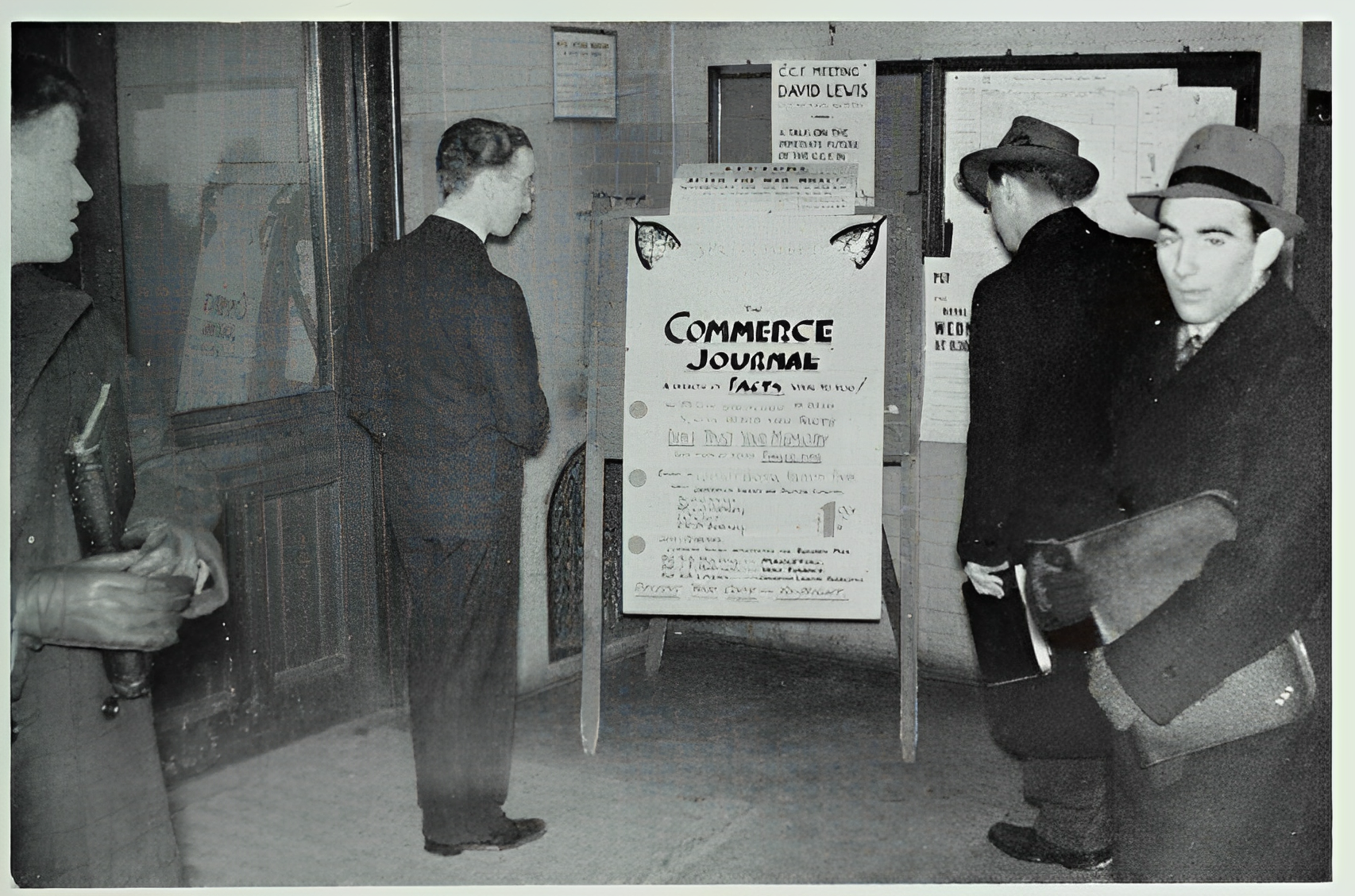
Driving change: the legacy of the Commerce Journal
The Commerce Journal, a publication launched by the Commerce Club in the midst of the Great Depression in 1933, set in motion Rotman Commerce’s illustrious history of 100 years of student-led initiatives.
Inspiration in a challenging time
In 1933, students would have been witnessing a Canadian society in shock and despair: billions of dollars in value had evaporated from Canadian stock markets a few years prior, exports were down by one-third from the late 1920s, drought had just ravaged the continent and nearly one-third of the workforce was unemployed.
How should the economy emerge from its current crisis? Which of several radically different economic systems would help Canada thrive once more? During the height of the Great Depression, these and similar questions would likely have occupied students’ minds and engendered fierce debates at the University’s Commerce Club. This unprecedented situation, in which economics would clearly play a key role in its resolution, was at the forefront of Commerce students’ minds when they first decided to take the initiative of establishing the Commerce Journal.
The publication, edited and published by the Commerce Club, the official representative organization of undergraduates in the Commerce program, was first introduced in 1933. It was created with the objective of providing insights from trusted voices to inspire those determined to make a difference in the business world. In the Commerce Journal’s first edition, the Commerce Club executive characterizes the Journal’s purpose as “providing enlightenment and stimulating clear thinking on subjects of outstanding importance at the present time.”
Commerce Journal Staff, 1949 (courtesy University of Toronto Archives)
From local to global prominence
After the first 250 copies sold, the Journal gained a widespread following and demand grew for its quality and reasonable price. The publication’s success was praised in a 1936 article by The Varsity, the University of Toronto’s official student publication, which read: “…rarely has a Journal of this type achieved such a wide degree of popularity and usefulness in so short a time.”
Further acclaim for the Journal was offered by the President of U of T at the time:“Never were an accurate knowledge of the facts of a world situation and clear thinking upon their significance and relations more necessary than today…I am glad that such a publication should be issued by members of the University. It will stimulate thought in those who read it.”
Throughout the 1950s, the Journal cemented itself as a prestigious university press publication with circulation reaching an international audience across the United States, the Netherlands, Great Britain, and South Africa. At the height of its circulation, 1000 copies of the Journal were distributed worldwide.
In 1968, after over three decades of imparting business wisdom, the final edition of the Journal was published and its circulation came to an end. The dissolution of the Journal coincided with the ending of the Commerce Club, reflecting a lack of student interest and participation.
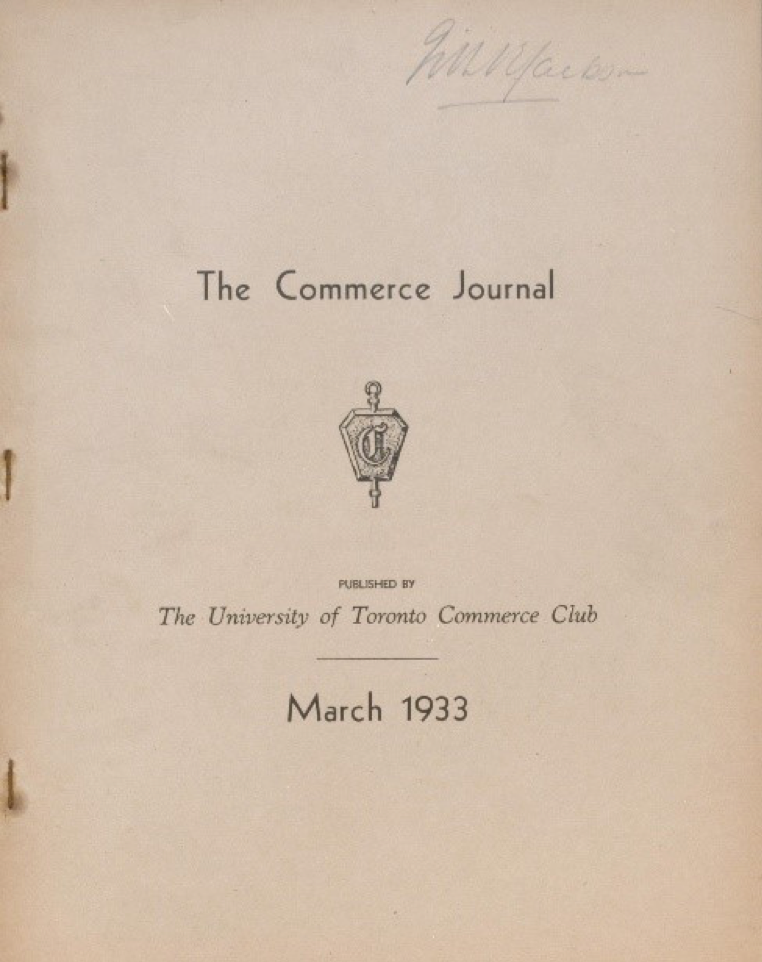
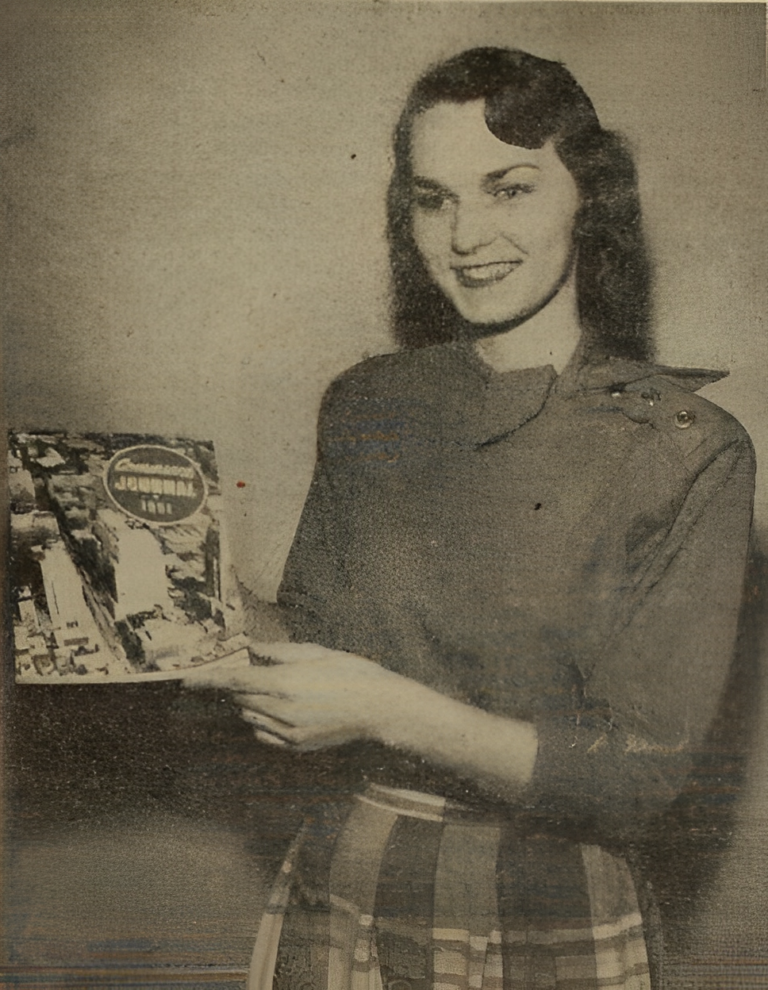

Making its mark through thought leadership
The Journal’s success can be attributed in part to the contributions of leading thinkers in politics, finance and academia, who later went on to leave lasting legacies within Canadian society.
Harold A. Innis
Harold A. Innis, the first president of the Commerce Club, contributed significantly to the early success of the Journal. Innis, who later became Dean of the School of Graduate Studies, developed the staples thesis, which stressed the export of traditional commodities, or natural resources, for a strong economy.
Marshall McLuhan
One of the most influential articles published by the Journal was Canadian philosopher Marshall McLuhan’s 1952 piece, “Advertising as a Magical Institution,” which called for the study of advertisements in relation to communication techniques. The article is still cited in communications and media studies today.
Lester B. Pearson
The Journal also featured Lester B. Pearson – then Canada’s Secretary of State for External Affairs and later Prime Minister –who discussed Canada’s position in the United Nations and its positive influence on the country’s economic development and international relations.
Reach and impact of the Journal
The Journal’s impact was far-reaching, drawing the acclaim of John R. Kimber, the first chairman of the Ontario Securities Commission and “the father of investor protection in Canada.” In 1966, Kimber wrote to Professor Charles Allan Ashley asking for his opinion on The Securities Act after reading an article by Ashley published in the Commerce Journal. The correspondence between the two men demonstrates the reach and impact of the Commerce Journal on the development of Canadian economics and economic policy during the 1950s and 1960s.
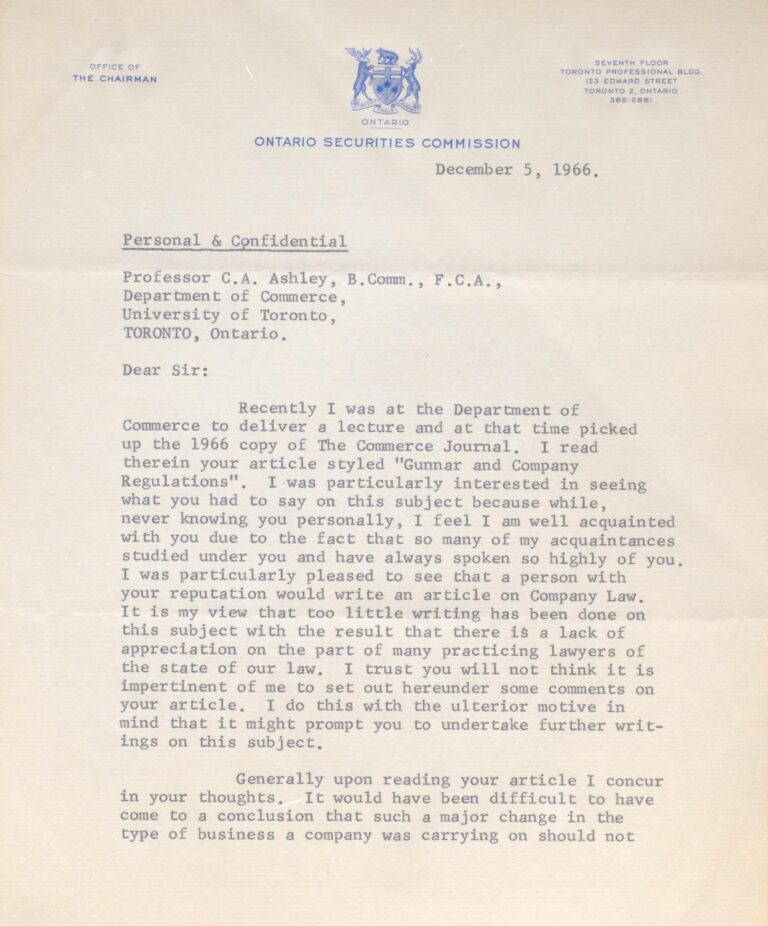
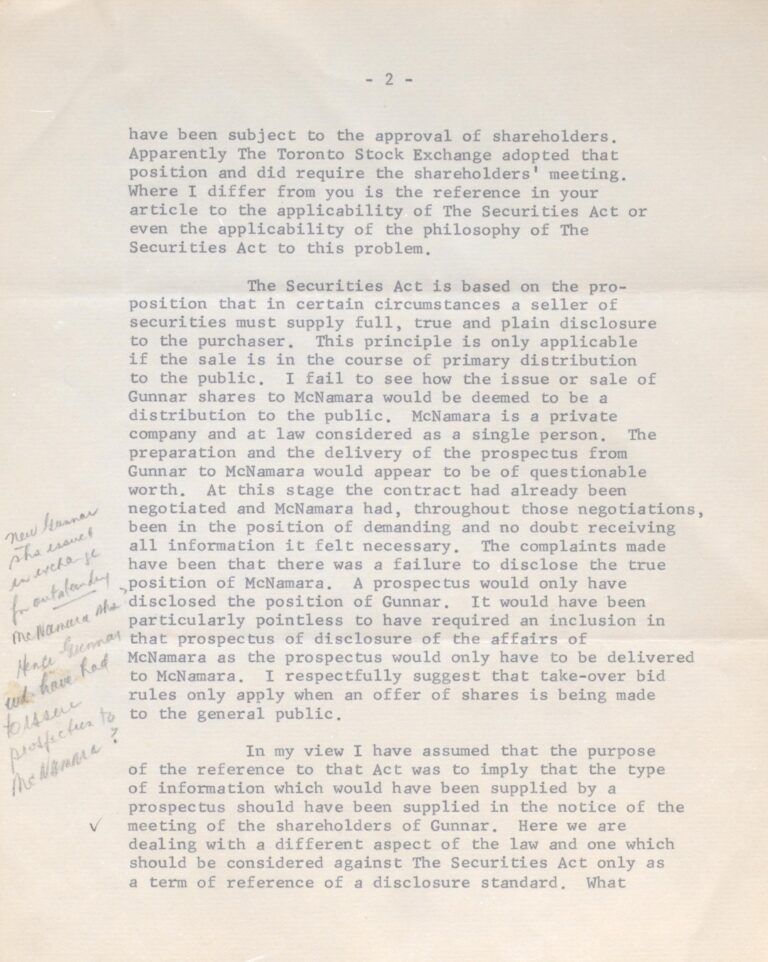
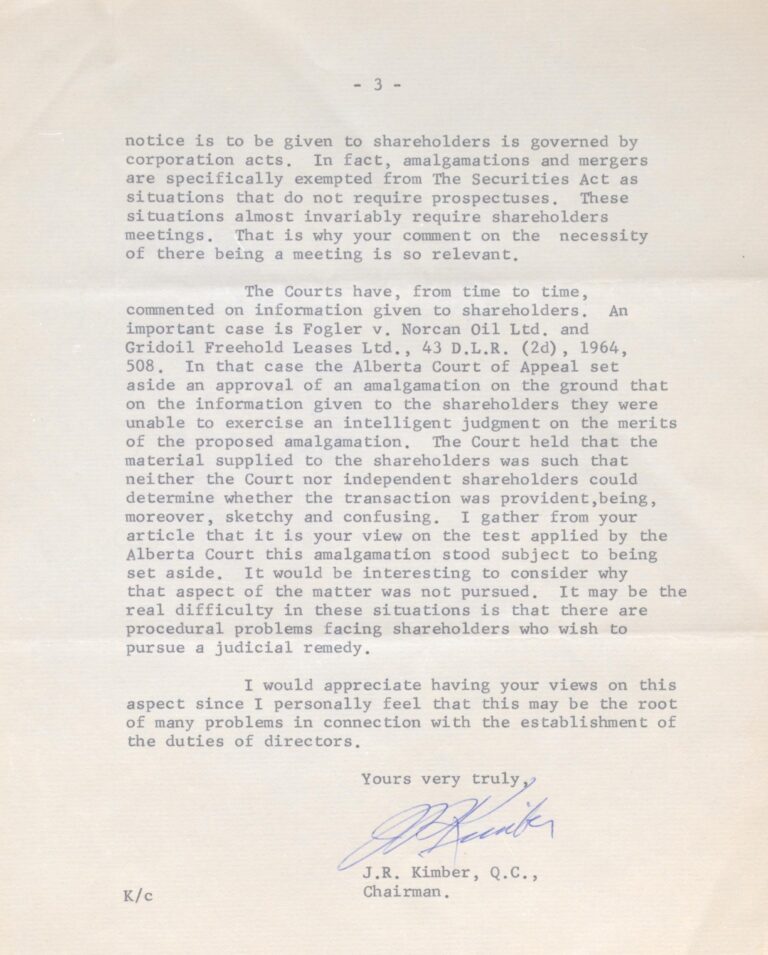
Carrying the Journal’s legacy forward
The Commerce Journal paved the way for the medley of student-led initiatives that continue to impact Rotman Commerce today. Rotman Commerce fosters a culture of student-led initiatives that build for change, connect opportunities, grow community, and transform tomorrow, with students continuously breaking new ground in driving difference.
In a similar way as the Commerce Journal, today the Rotman Commerce Students’ Association (RCSA) works to nurture a spirit of camaraderie and provide opportunities for student leadership beyond the classroom. In 2020, RCSA created the Equity, Diversity & Inclusion Course of Action Report to ensure an accessible and equitable space for students. The group also launched the RCSA International Students’ Award to initiate a cycle of giving back to the student community.
In 2020, students Jasmine Ali (BCom ‘21), Judson Asiruwa (BCom ‘20), Jeffrey Fasegha (BCom ‘20), Zainab Hamid (BCom ‘20 ), and Aysha Nebil Mohammed (BCom ‘21) founded Black Rotman Commerce (BRC), an award-winning initiative that champions opportunities to enhance visibility for Black students through networking, conferences, and mentorship.
As a student, Khadija Waseem (BCom ’21) founded Accessibility at Rotman Commerce, the first peer-led centralized navigation program for students outside the classroom. Khadija’s efforts advocated for marginalized students, raised awareness about systems of inequalities within the world of academia, and provided mitigative solutions that will make it easier for future students to make the most of their experience at Rotman Commerce.
The Commerce Journal‘s history demonstrates Rotman Commerce’s long-standing commitment to providing reliable insights and inspiring future business leaders. Today’s students continue to embody the spirit of the Journal by leading trailblazing initiatives that seek to make a positive impact on the world.
By Matina Adamopoulos and Claudia Flis
Lead photo: Advertisement for Commerce Journal, 1941 (courtesy of University of Toronto Archives)
